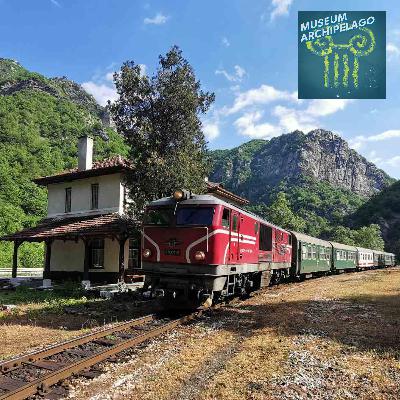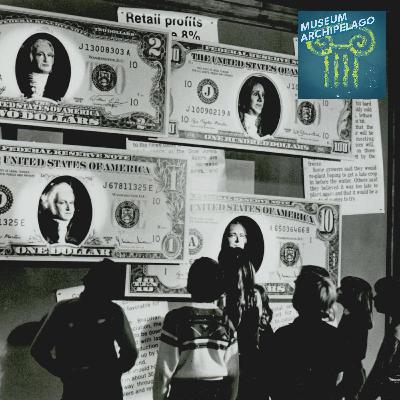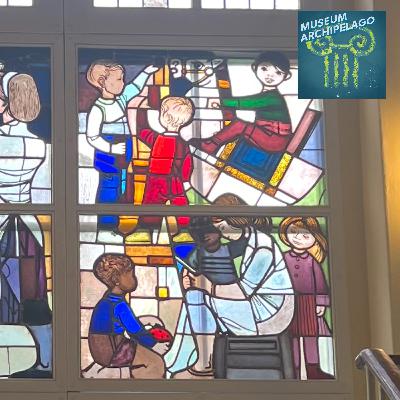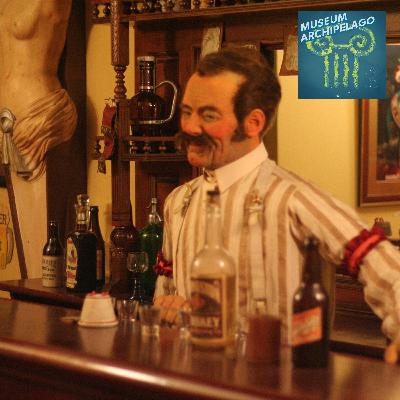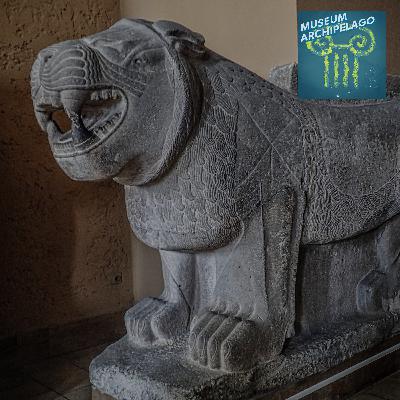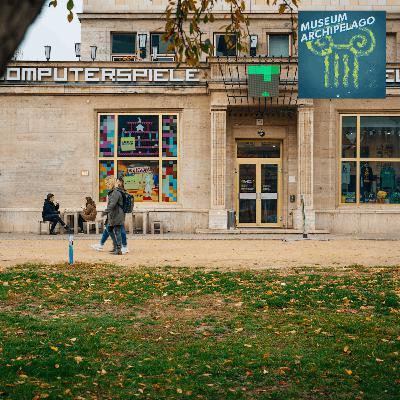93. Bulgaria’s Narrow Gauge Railway Winds Through History. Ivan Pulevski Helped Turn One of Its Station Stops Into a Museum.
Description
In 1916, concerned that the remote Rhodope mountains would be hard to defend against foreign invaders, a young Bulgarian Kingdom decided to build a narrow gauge railway to connect villages and towns to the rest of the country. The Bulgarian King himself, Tsar Boris III, drove the first locomotive to the town of Belitsa to celebrate its opening. But the Septemvri - Dobrinishte Narrow Gauge Railway would far outlast the King and the Kingdom, the communist era that followed, and the rocky post-communst period.
Today, the railway is still a fixture of life in the region as a vital link to remote villages with no road access. But decades of neglect have left many stations crumbling. Train enthusiast Ivan Pulevski, a member of the organization “For The Narrow Gauge Railway,” helped found the House-Museum of the Narrow Gauge Railway in one of these abandoned stations. A sign on the building says the museum was built “for people, by people.”
In this episode, Pulevski describes the decision to build the museum using only volunteers, how to interpret multiple eras of Bulgarian history through the lens of a railway, and why they have had no plans to seek official museum accreditation in Bulgaria.
Topics and Notes
- 00:00 Intro
- 00:15 Winding Through History
- 00:50 Septemvri–Dobrinishte narrow-gauge line
- 01:10 Ivan Pulevski
- 01:33 Stoyan Mitov and the Engineering of the Railway
- 03:20 Tsar Boris III
- 03:50 The House-Museum of the Narrow Gauge Railway
- 04:40 No Electricity and No Water Supply
- 05:30 After The Collapse of the Communist Era
- 05:55 Organization "For The Narrow Gauge Railway"
- 06:32 Restoring the Building / Making the Museum
- 08:30 Bulgarian Museum Regulations
- 10:10 Outro | Join Club Archipelago 🏖
Museum Archipelago is a tiny show guiding you through the rocky landscape of museums. Subscribe to the podcast via Apple Podcasts, Google Podcasts, Overcast, Spotify, or even email to never miss an episode.
Unlock Club Archipelago 🏖️
- Access to a private podcast that guides you further behind the scenes of museums. Hear interviews, observations, and reviews that don’t make it into the main show;
- Archipelago at the Movies 🎟️, a bonus bad-movie podcast exclusively featuring movies that take place at museums;
- Logo stickers, pins and other extras, mailed straight to your door;
- A warm feeling knowing you’re supporting the podcast.
Transcript
Below is a transcript of Museum Archipelago episode 93. Museum Archipelago is produced for the ear, and only the audio of the episode is canonical. For more information on the people and ideas in the episode, refer to the links above.
<input id="collapsible" class="toggle" type="checkbox">
<label for="collapsible" class="lbl-toggle">View Transcript</label>
Welcome to Museum Archipelago. I'm Ian Elsner. Museum Archipelago guides you through the rocky landscape of museums. Each episode is never longer than 15 minutes, so let's get started.
The waiting room of Tsepina Station, south of the Bulgarian city of Septemvri in the Rhodope mountains, sits under the watchful eye of portraits of Vladimir Lenin and Georgi Dimitrov -- the revolutionary communitst leaders of Russia and Bulgaria respectively. But the communist period is only one of the eras of Bulgarian history the narrow gauge railway winds its way through.
Construction on the railway, and the station, began in 1920, when a young Bulgarian Kingdom was concerned that the remote Rhodope mountains would be hard to defend against foreign invaders. Today, the railway is still a fixture of life in the region. Each day, 10 times a day, a diesel train passes by the station.
Ivan Pulevski: Many people rely on this railway because it's their only transport, their only way of transport, because there are many villages which has no road.
This is Ivan Pulevski, a train enthusiast who is also one of the founders of the House-Museum of the Narrow Gauge Railway, which sits inside Tsepina station.
Ivan Pulevski: Okay, my name is Ivan, Ivan Pulevski and I'm from Plovdiv. I'm currently a student in the Technical University of Sofia and I study transport technology and management.
Creating the railway through such mountainous terrain was a transport technology and management problem for 1920. The first two engineers who were invited by the government to plan the railway quit because of the technical difficulty of building it. Instead, the honor fell to a young engineer called Stoyan Mitov.
Mitov’s innovation was to build the railway in such a way that if you looked at it from above, the track would form numbers -- eights and sixes as the tracks pass over and under themselves to change elevation in such a tight space, The design also called for numerous tunnels.
Ivan Pulevski: This is actually a map of how it crosses. And it looks like eight. And these are two forms, which are more like six. So it was really, really complicated project: so all these tunnels. The railway actually has 35 tunnels.
In order to do that, the rail needed to be narrow gauge, which could handle the tight turning radiuses. The gauge refers to the distance between the two tracks of the railway: in this case, 760 mm. Every other working railway in Bulgaria today is standard gauge, with a distance between the tracks almost double that at 1,435 mm.
The painstaking construction continued for over two decades. Slowly, more and more villages and towns were connected to the rest of Bulgaria.
Ivan Pulevski: It was pretty primitive actually, because they didn't have multiple techniques and all the works were done by hand.
Finally, in 1939, the railway reached the Bulgarian town of Belitsa. To celebrate a more interconnected Bulgaria, none other than the Bulgarian King, Tsar Boris III drove the first locomotive to the city.
Ivan Pulevski: He was the only monarch in Europe who had a legal driving license for a train, for a steam engine. And the elderly people who still remember this moment say that they saw two miracles of their time: the train and the king.
The majority of the House Museum of the Narrow Gauge Railway concerns the daily functioning of the station after Tsar Boris III, and the beginning of the communist era in 1944. By 1945, the railway was complete in its current form, stretching from Septemvri to Dobrinishte.
Ivan Pulevski: It was actually probably the period in the timeline that the railway was at its peak. And in 1966 it had 71 trains per day.
The station’s waiting room is preserved with pictures and information about the different types of carriages and locomotives from the era. There’s a ticket counter window looking into the main control office of this station -- all using technology that was not regularly updated.
Ivan Pulevski: This station had no electricity and no water supply. So they used lanterns with gasoline and these phones, which are only connected to the Telegraph wire. And we still have no electricity.
As a result, the artifacts in the control office have an old-school charm -- you can see the hand-written diary of each train that came through, you can handle the heavy metal keys for the track switches, and you can even “validate” your ticket with the official heavy-duty ticket validation machine.
The station manager lived at the station, in rooms right above the control office and waiting room. Managers would get buckets of food and water delivered by train.
After the communist era collapsed in 1989, things got worse for the narrow gauge railway, and with no station manager, this station building fell into disrepair.
Ivan Pulevski: After the collapse of the communist era, many factories closed and actually the railway was not really maintained and the total abdication of the government made things so complicated that in 2003, all the freight trains were cut.
Pulevski’s organization, called “For the Narrow Gauge Railway” fought against cutting passenger services t

